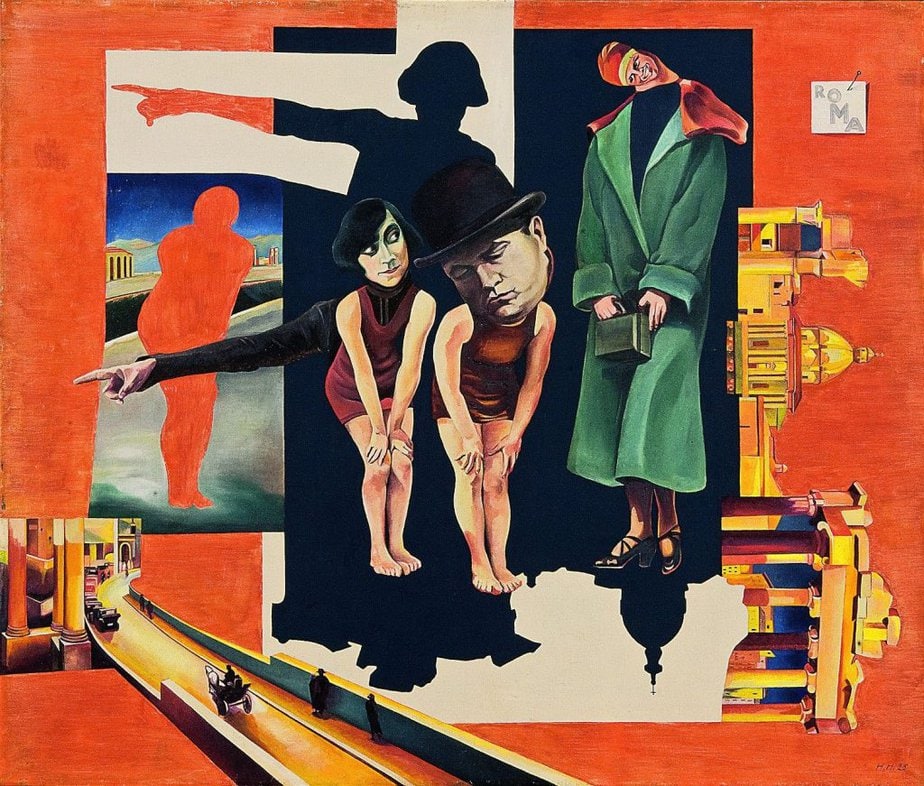Collage art is a technique in which various materials like paper, photographs, fabric, and found objects are assembled to create a new work of art. Collage often involves layering, juxtaposing, and arranging these elements in creative ways, resulting in a unique composition.
The term “collage” comes from the French word coller, meaning “to glue,” and it emerged as an art form in the early 20th century, notably through Cubism.
Here are 12 famous collage artworks and the artists who created them:
Still Life with Chair Caning by Pablo Picasso (1912)
Picasso’s innovative piece used oilcloth printed with a chair-caning pattern, creating one of the earliest examples of collage art and marking the start of Synthetic Cubism.
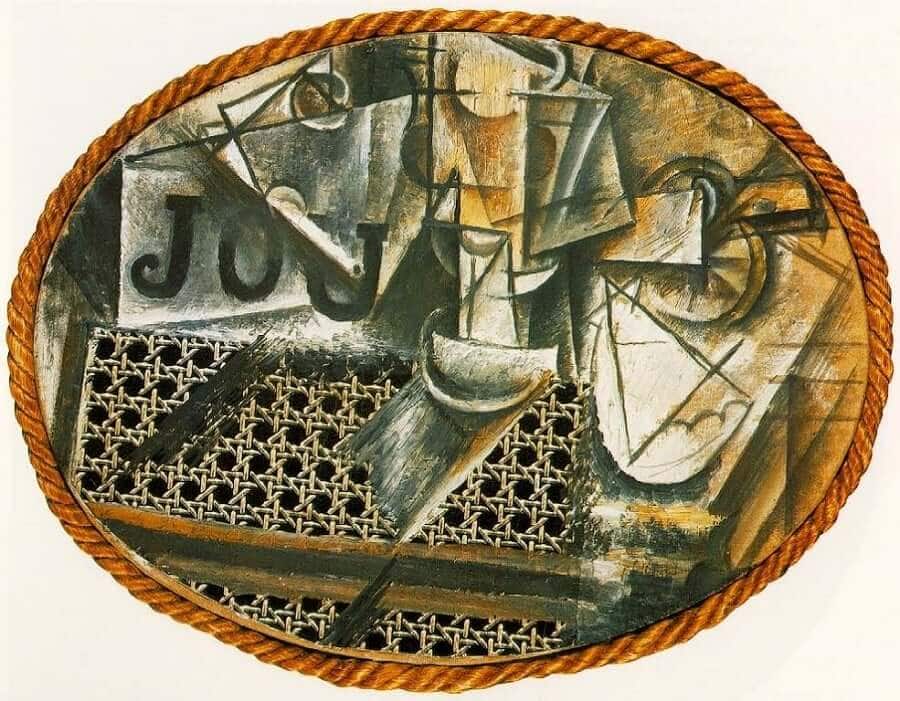
Cut with the Kitchen Knife Dada through the Last Weimar Beer-Belly Cultural Epoch in Germany by Hannah Höch (1919)
A pioneering Dada artwork, Höch’s collage used magazine cutouts to critique society, challenging norms with bold political and feminist themes.

Jealousy by Romare Bearden (1961)
Bearden’s collages celebrated African American culture, often using photo fragments and painted papers to depict scenes of daily life in Harlem and African American heritage.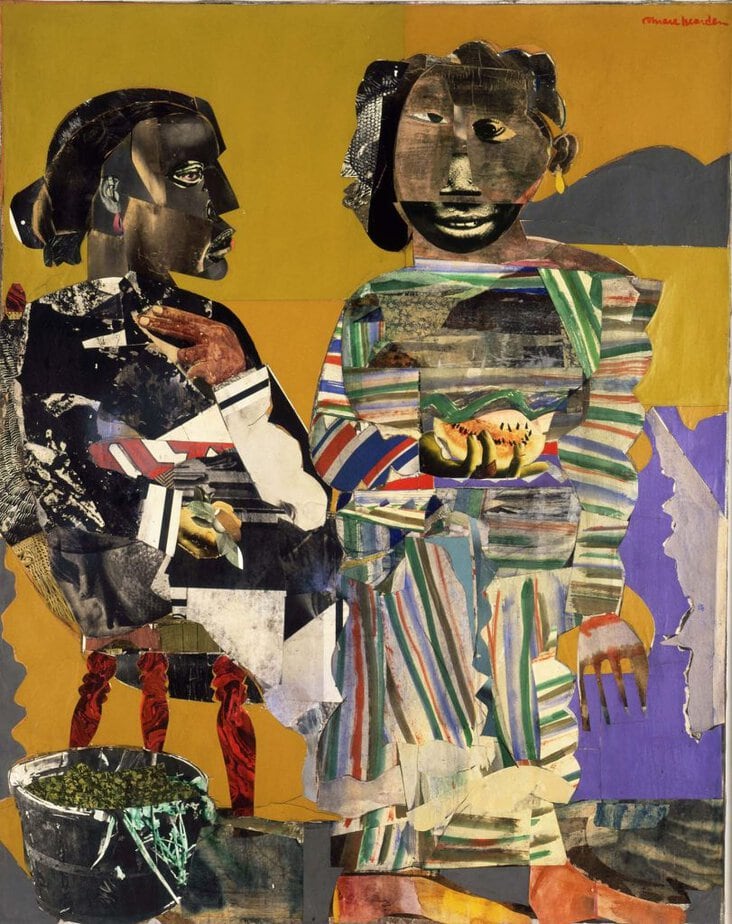
I Saw Three Cities by Max Ernst (1923)
Ernst, a Surrealist, used collage to create dreamlike, fantastical scenes. His method of “frottage” involved using textured rubbings to form bizarre landscapes and hybrid creatures.
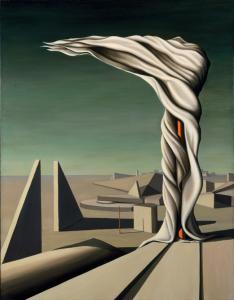
The Snail by Henri Matisse (1953)
In his later years, Matisse used brightly colored paper cutouts to create large-scale collages, often inspired by organic forms. “The Snail” is a famous example of his joyful, abstract compositions.

The Eye of Silence by Hans Bellmer (1949)
Bellmer, known for his surreal collages, crafted unsettling and ambiguous works. “The Eye of Silence” incorporates organic and mechanical forms, creating eerie atmospheres.
Victory Boogie Woogie by Piet Mondrian (1944)
Mondrian’s famous geometric collage of painted paper squares represents New York City’s jazz-inspired energy. Although unfinished, it remains an iconic abstract composition.
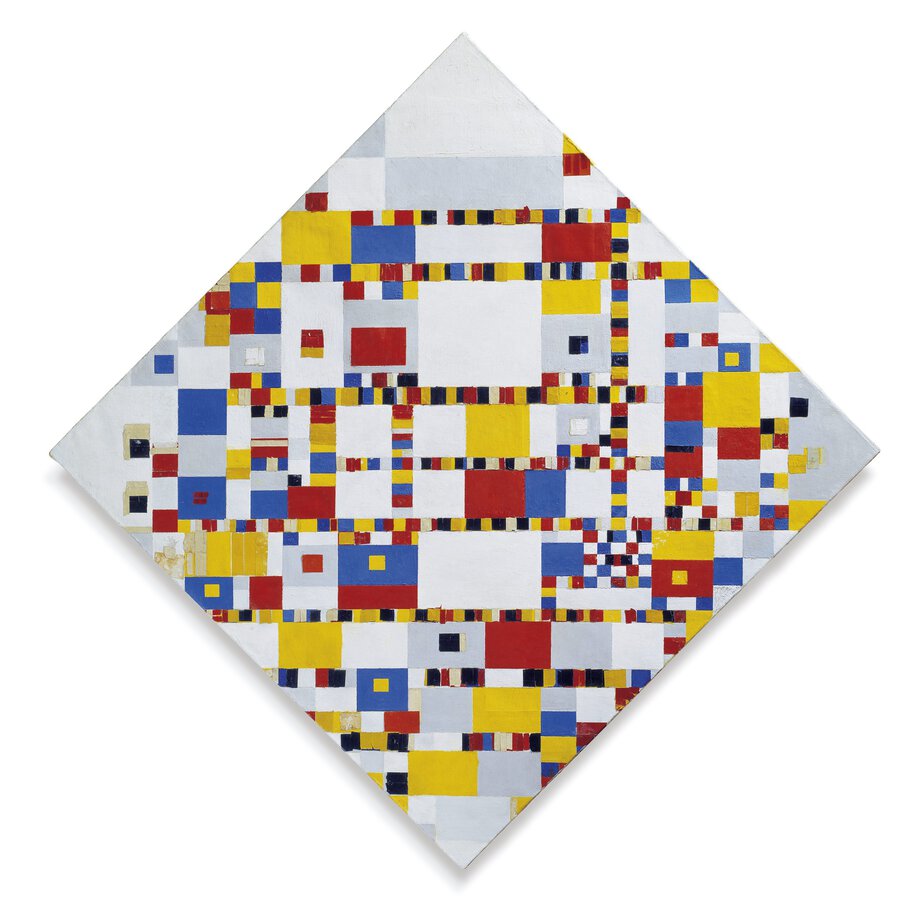
Victory boogie woogie
American Collectors (Fred and Marcia Weisman)by David Hockney (1968)
Known for his photo collages, Hockney used images to deconstruct scenes, capturing time and perspective through a series of Polaroids and photos layered to form portraits and landscapes.

Just What Is It That Makes Today’s Homes So Different, So Appealing?by Richard Hamilton (1956)
This satirical collage is considered a foundational work of Pop Art, combining advertisements, household images, and pop culture references to critique consumerism.

Marilyn Diptych by Andy Warhol (1962)
Warhol’s silkscreen collage of Marilyn Monroe repeats her image, creating an iconic Pop Art work that critiques celebrity culture and the commodification of identity.
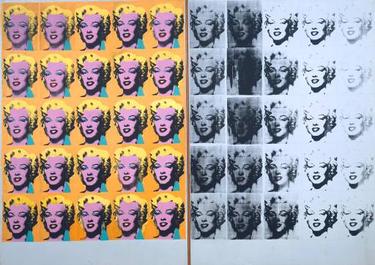
You Became a Scientific Profile by Lorna Simpson (1995)
Simpson combines photography and text to address issues of identity, race, and gender, often presenting fragmented images of body parts with contrasting words.
Red Blue Green by Ellsworth Kelly (1963)
A master of minimalist collage, Kelly cut and assembled bold geometric shapes in contrasting colors to create visually dynamic compositions.
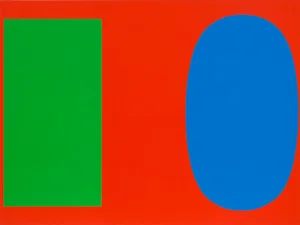
These artists and their works have left a lasting impact on modern and contemporary art, each bringing unique perspectives to the collage medium.


